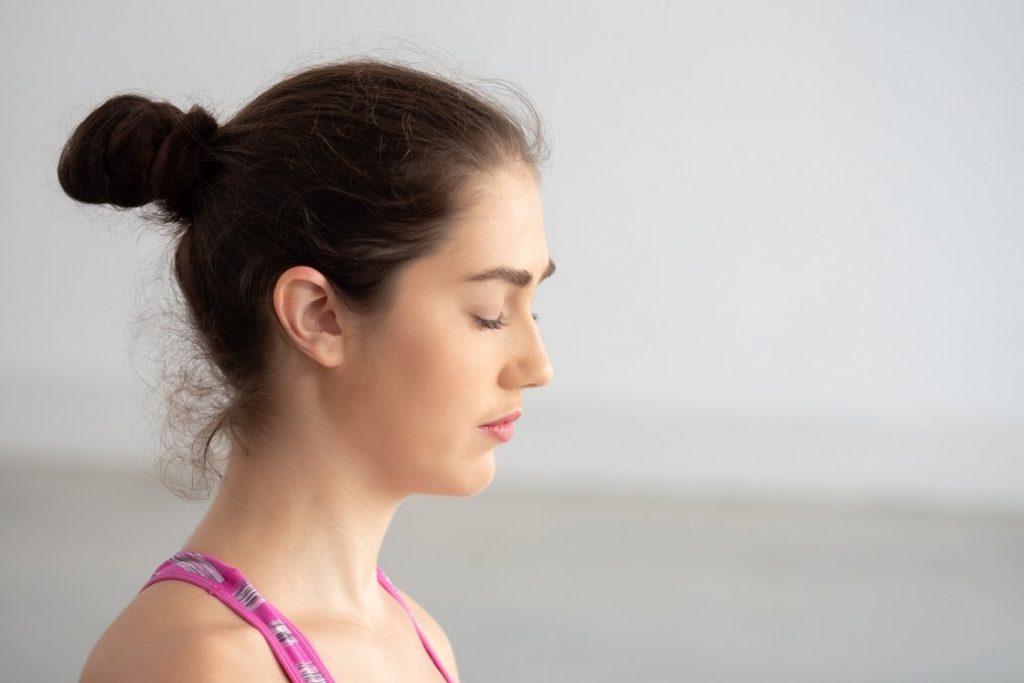
Just like any other emotion, anger is part and parcel of life. There are multiple scenarios and situations where we can’t help but get angry. However, it is a negative emotion that not only affects us mentally but also physically.
Anger activates the sympathetic nervous system which is in “fight or flight” mode. During an episode of anger, your heart rate, breathing, and blood pressure increase. This can cause a plethora of problems that not only affect your emotional, mental and physical well-being but also affects the people around you.
Fortunately, you have an easy and safe way to curb and control this negative emotion. Through practising yoga and meditation, you will be able to handle your emotions well and think positively.
There are many yoga asanas, mudras, pranayama, and meditation techniques that you can imbibe in your life to successfully contain your anger.
What does science say about yoga and anger management?
In 2008, a randomized control trial was done on 226 participants whose ages ranged between 17-62 years. They were divided into two groups – Yoga (Y) group practiced an integrated yoga module that included asanas, pranayama, meditation, notional correction, and devotional sessions. The other group was told to practice moderate physical exercises (PE).
After 8 weeks, it was noted that people in the Y group had a significant decrease in verbal aggressiveness as compared to the PE group.
In 2016, a paper was published which showed that a single meditation session was helpful in reducing the body’s response to anger on experienced and beginners alike.
Another study shows that a group of adolescents who regularly practiced yoga were better equipped to handle their emotions, such as anger, sadness, anxiety and feelings, and had good self-esteem.
A paper published in 2012 has published the results of how yoga intervention on 98 elderly people improved their psychological health. They were taught various poses and were assessed on the levels of anger, anxiety, depression, morale, self-efficacy, and self-control.
In a different study conducted on 113 psychiatric inpatients at New Hampshire Hospital, it was observed that after a yoga intervention, there was a significant improvement in tension-anxiety, depression-dejection, anger-hostility, fatigue-inertia, and confusion-bewilderment.
Even though there have been multiple studies and research have been conducted, this literature review noted that in the papers they reviewed, many had limitations such as small study populations, lack of randomization, and lack of a control group. Hence more evidence is needed to prescribe yoga as a full-fledged treatment option.
Besides the caution, it cannot be ignored that breathing techniques and stimulating certain body areas do help in controlling our anger.
How can you control your anger?
There are a number of ways to keep your anger in check by making a few changes in your life such as:
- Eating healthy, fresh, non-spicy, and non-oily foods.
- Getting quality restful sleep.
- Be less self-critical by accepting your flaws and working on them.
- Know when to show or suppress your anger.
- Let positivity surround you by engaging with positive and supportive people.
- Accept that no one is perfect. People will not behave the way you want.
- Practice pranayama, yoga, and meditation.
In this article, we will be focusing on the last tip and list some effective yoga asanas to help with your anger management.
Yoga poses for Controlling Anger
Some of us are adept in handling our emotions and feelings however, for most of us, we are prone to outbursts and lashing out in ourselves and others. This often results in guilt and shame, which also results in getting angry at ourselves, and thus a vicious cycle is created.
Practicing yoga will not only calm your mind but will also give you the confidence and strength to control your anger.
Here are some effective yoga asanas for anger management that you can perform regularly:
1. Corpse Pose (Savasana)
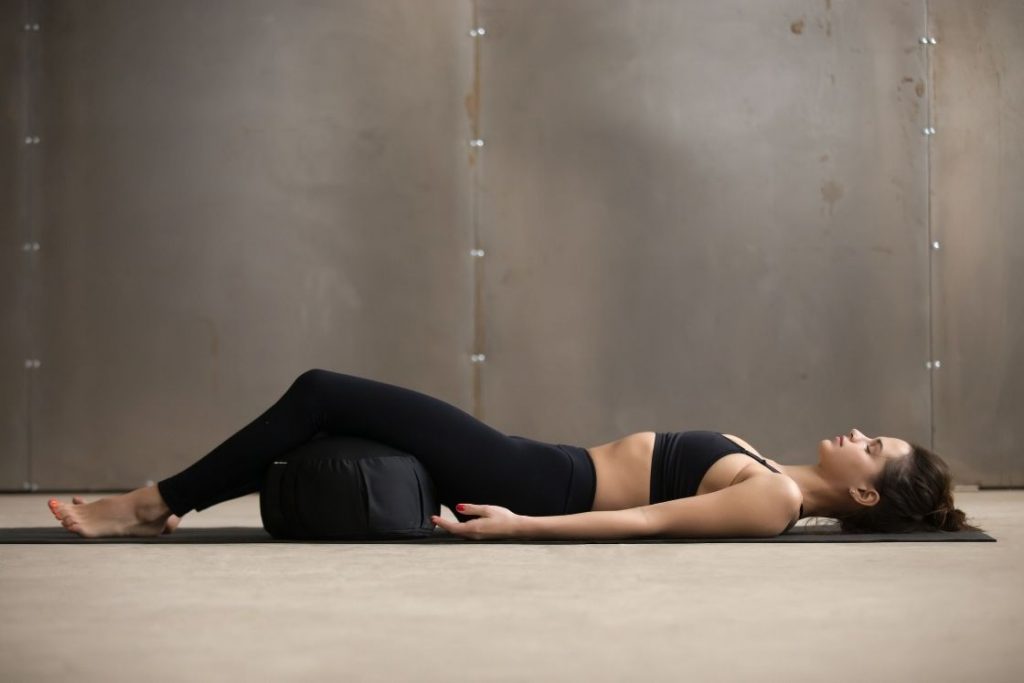
This pose is one of the simplest yet challenging poses. It is often performed at the end of a yoga session or as a transitional pose. The benefits of lying down completely on your back are immense, thus this pose should not be taken lightly.
On a yoga mat or a thick blanket, lie down completely on your back. Keep your legs straight with toes pointed upwards or sideways. Your hands should be beside you with palms up. Close your eyes, focus on your breathing and let your body relax.
Savasana will help you relax by stabilizing your heart rate and blood pressure, which are side effects of anger. It also activates the parasympathetic nervous system that is responsible for the “rest and digest” mode after an emotional or traumatic episode.
2. Supported Shoulder Stand (Salamba Sarvangasana)
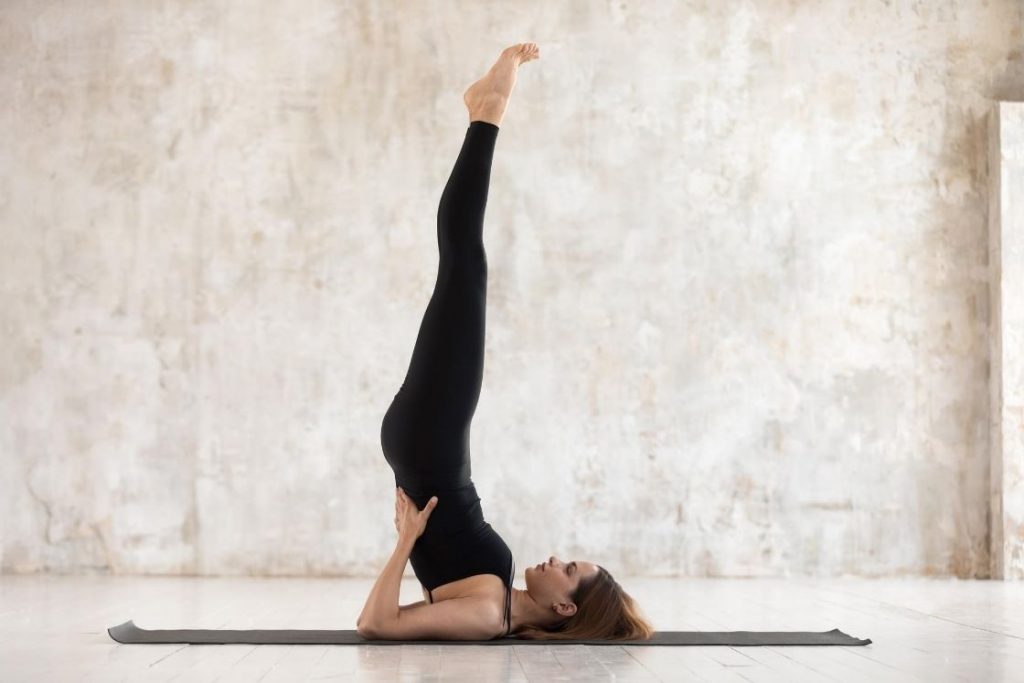
While this pose comes under the category of the advanced pose, the inversion helps in increased circulation to the head. It is a great pose for people who suffer from frequent episodes of anger, irritability, or any other emotional or hostile outburst.
- Place a thick folded blanket and lie down with your shoulders supported by the blanket.
- Fold your legs so that the feet are firmly grounded to the floor and heels close to the sitting bones. Rest your arms beside your torso and on an exhale, press your arms to the floor and lift your feet bringing your thighs towards your torso
- Keep lifting till your knees are in front of your face and your pelvis and lower back have completely lifted from the floor. Over here, bring your hands to support the lifted part of the back keeping your upper arms straight.
- Lift your torso so that the area below the shoulder is relatively perpendicular to the floor. Slide your hands back so that they are now supporting your mid-back.
- Slowly, straighten your legs one by one and point your toes towards your head. To correct your alignment, make sure your feet are over your hips and hips are over the shoulders. Hold this position for 8-10 breathes.
- To come back from this pose, bend your knees one by one and slowly lower your torso while sliding your hands from the mid-back to the pelvis. Place yoru feet on the floor and straighten them to rest in Savasana.
3. Revolved Crescent Lunge (Parivrtta Anjaneyasana)
This twisting pose will help in stimulating and massaging the spinal column. The stretching of the hips helps you feel grounded. Anger creates tension in the muscles and spinal column and the revolved crescent lunge will give you a nice stretch to release this tension.
- Begin by standing in Tadasana (Mountain Pose). Bring your right leg in front of you creating a gap of 3-feet between your legs keeping your right feet pointed forward
- Bend your right knee to make the thighs parallel to the floor and knees stacked on the ankle. Bring your left knee down to the floor so that the lower part of the leg rests completely on the yoga mat.
- Put your hands in the Anjali mudra in front of your chest.
- Twist your torso to the right side, bringing your left elbow to rest on the outside of the right knee. The other elbow will be pointed towards the ceiling. Your gaze can be slightly upwards, towards the ceiling.
- Hold this position for 5-8 breathes or as long as you can. Repeat with the left leg as well.
4. Head-to-knee Forward Bend (Janu Sirsasana)
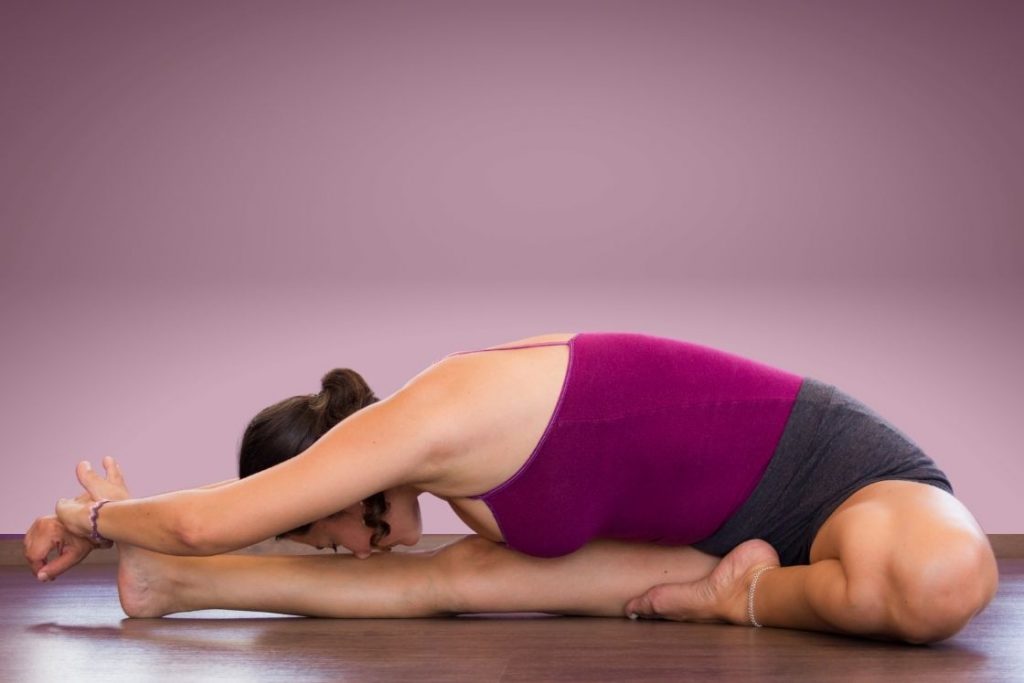
This forward bend is also effective in stretching your spine and back muscles and massaging the abdomen. The lowering of the head encourages blood and oxygen circulation which helps in calming the mind.
It is also effective in stimulating and relaxing the nervous system which helps with anxiety, anger, and mild depression.
By releasing tension from the muscles and calming a chaotic mind, your anger will surely reduce.
- Sit in Dandasana (Staff Pose) on a yoga mat. Bend your right knee and bring the sole to rest on the inner left thigh.
- As you inhale, sit up straight with your spine straight, your chest expanded slightly, and stretch the crown of your head towards the ceiling.
- On exhale, with a slight twist towards the left, bend forward from your hips. Your spine should be straight and shoulders relaxed.
- Bring your arms in front of you so that they are beside your left leg or you can try to hold your left ankle. Keep your gaze on the floor and neck relaxed. A slight micro-bend of the left knee is allowed.
- Hold the pose for 5-8 breaths and then repeat the same pose with the right leg.
5. Half Twisted Pose (Ardha Matsyendrasana)
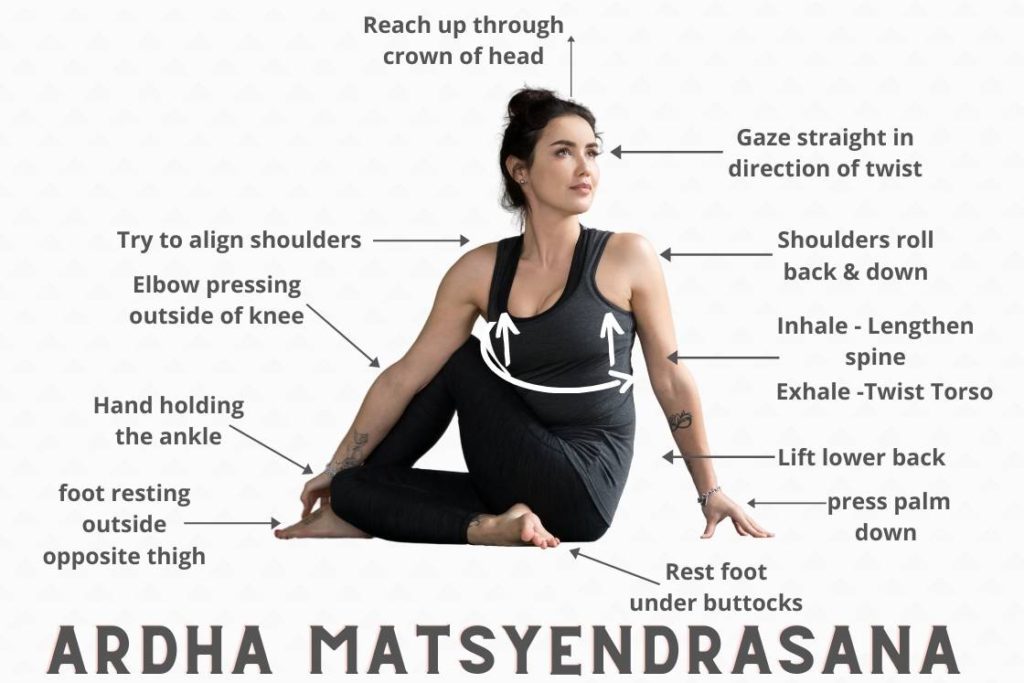
It is a great chest opener and improves circulation to the abdomen. The half twisted pose not only improves your flexibility but also helps release tension from muscles of the spine, back, and hips. It also helps in increasing oxygen supply to the lungs by expanding your chest, thus improving oxygen circulation.
And with improved circulation, your mind will also be rejuvenated and you will find mental peace.
- Sit in Dandasana (Staff Pose). Bend your right knee and bring the heel close to the sitting bone.
- While keeping your left leg straight, lift your right leg and bring it over the left thigh. Your right foot should now be placed outside the left thigh.
- Here you can choose to keep the left leg straight or bend it to bring the left foot under the right buttock.
- Take your right arm to the back and place your palm firmly on the mat.
- Twist your torso toward the right and bring your left elbow to be placed on the outside of the right knee. Your left forearm will be pointed upwards with your fingers closed. Alternatively, you can place the left arm in front of you, with elbows supported by the knee, for a deeper stretch.
- Turn your head with the twist and gaze over your shoulders.
- Keep this pose for 5-8 breaths and repeat with the other leg.
6. Child’s Pose (Balasana)
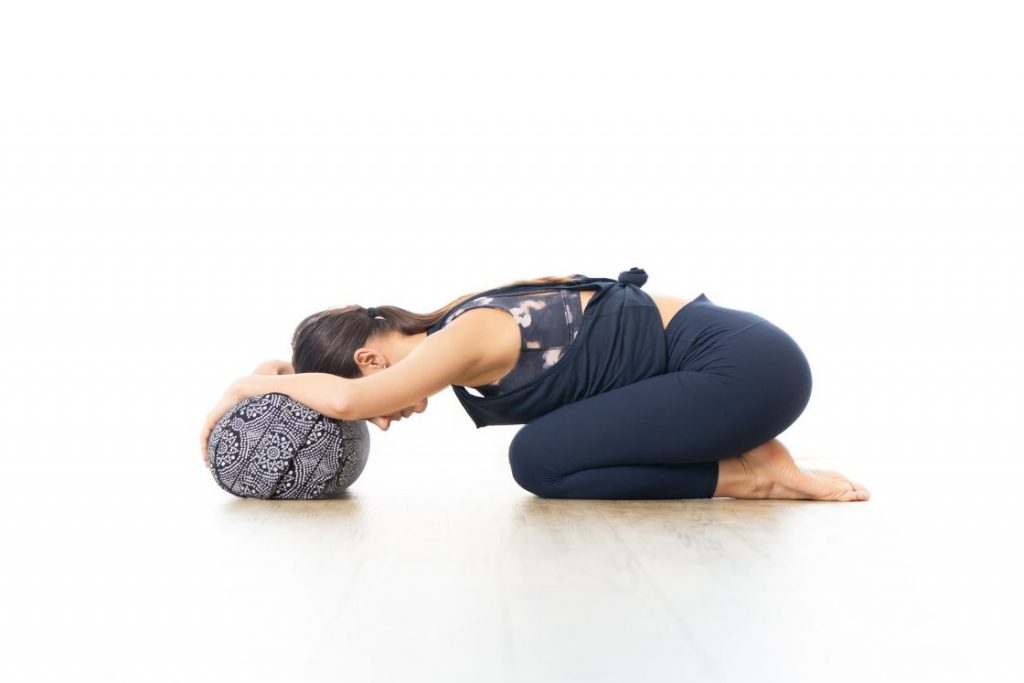
The child’s pose is a wonderful relaxing pose that is often recommended to relax and calm the mind. It brings the heart lower than the head which increases blood circulation to the brain. It stretches the hips, hamstrings, spine, and back muscles, which releases the tension and stress accumulated in these areas.
You are also being grounded in this seated forward bend pose, which is essential for controlling your anger. This pose also activated the parasympathetic nervous system.
- Sit in Vajrasana (Thunderbolt Pose) on a yoga mat.
- Place your heels under your buttocks and the top of your feet on the floor. Make sure both your big toe is touching.
- While keeping your spine straight, start bending forward. Bend till the time your belly touches your thighs. If possible, bring your forehead to touch the ground or place a bolster or block to rest your forehead.
- For a deeper stretch on your hips and hamstrings and bend, spread your knees apart.
- Spread your arms forward in front of you with your palms down and fingers spread. You can also keep them beside your thighs or place them behind your back with hands entwined or in Anjali Mudra.
- Stay in this position for as long as you are comfortable.
7. Cobra Pose (Bhujangasana)
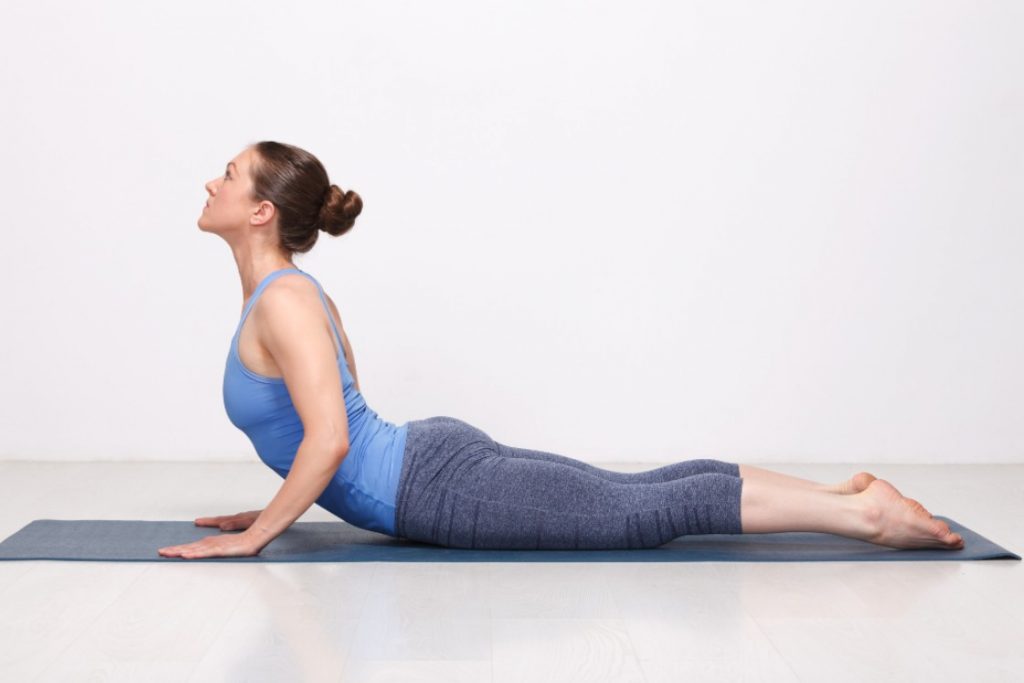
The cobra pose is well known as a chest opener. It helps in calming the mind and reducing anger and stress. The chest opening encourages you to push out unwanted feelings and emotions and accept positive energy. The spinal column gets a good stretch along with the back and neck muscles, releasing any lingering pain or stress.
- On a yoga mat, lie down on your stomach, with your feet together and your head resting on your forearms. The feet should be flat with soles facing up.
- Bring your palms under your shoulder so that your elbows are close to the torse and parallel to each other.
- Putting equal pressure on the palms, lift your head, chest, and abdomen. Keep the navel and lower body on the mat. Push your torso to the back by putting pressure on the palms.
- If possible, you can straighten your arms by pushing the torso back. Tilt your head back and gaze upwards.
- Hold this pose for 4-5 breathes or till the time you feel comfortable. You can come out of this pose and repeat the process a few more times.
Some other yoga practices
Pranayama for anger management
Pranayama is a controlled breathing technique that comes with a lot of benefits. They regulate the inflow and outflow of breaths and improve oxygen circulation in the body. It has a relaxing effect on the brain, which is why it is always suggested that you take deep breaths to calm your anger.
We have listed 3 effective pranayama techniques to help you with your anger.
1. Cooling Breath (Sheetali Pranayama)
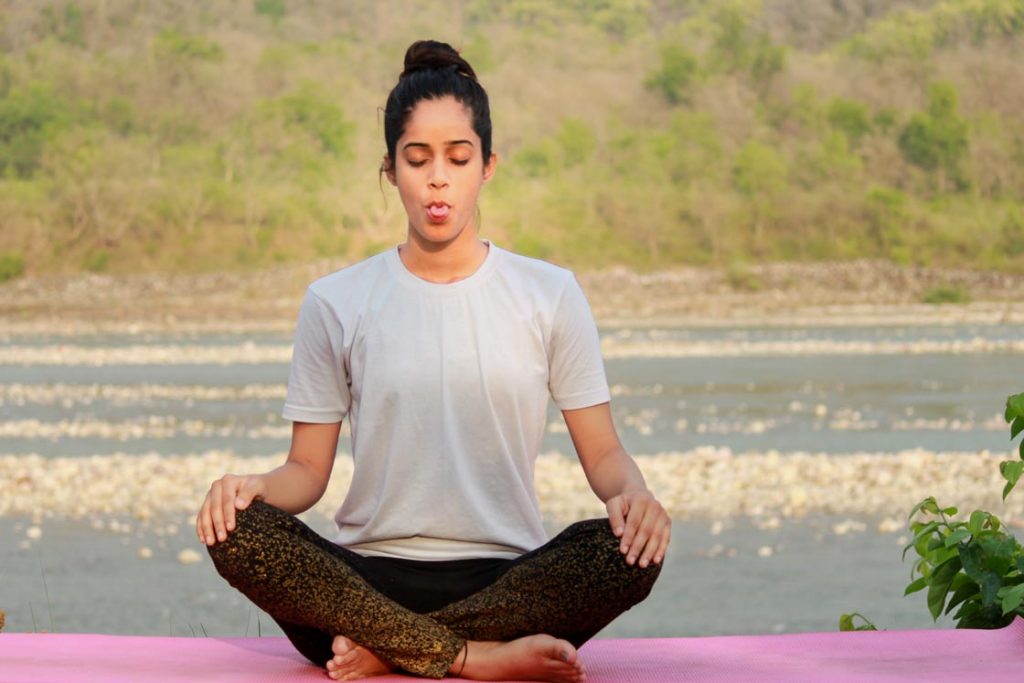
As the name suggests, it is extremely helpful in addressing anger issues by cooling down your mind and improving focus.
The simple technique involves rolling your tongue by curling the edges of the tongue inwards. If you are unable to do so, pucker your lips in a whistling motion. Inhale through the mouth so that the breath goes through the rolled tongue. Now close your mouth and exhale through your nose.
You can perform this technique while doing meditation or any yoga asana as well.
2. Anulom Vilom
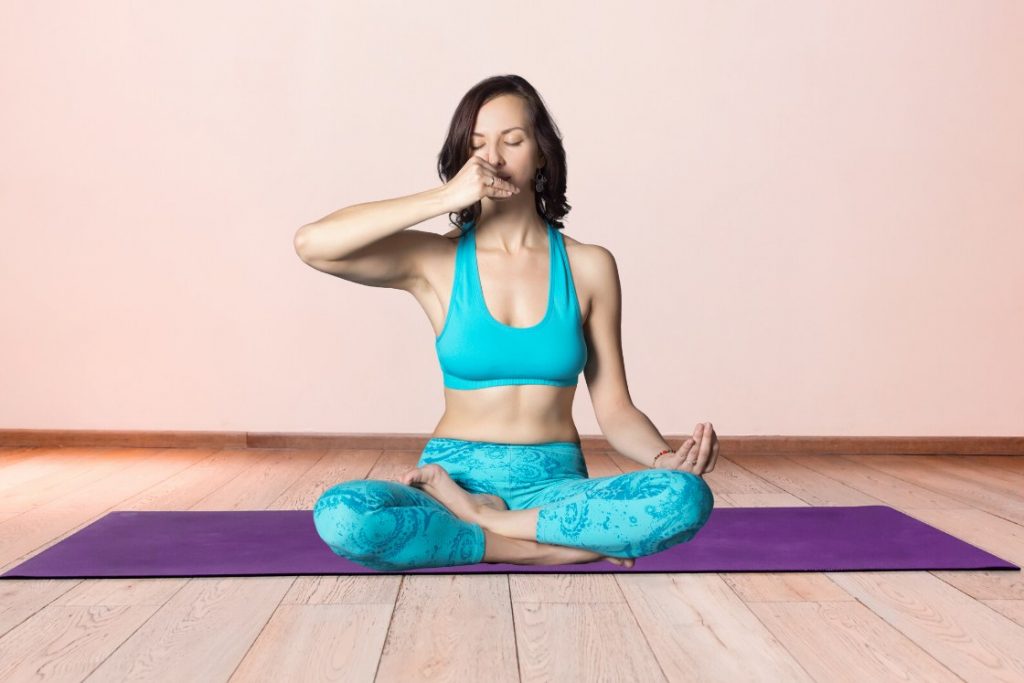
Known as alternate nostril breathing, you inhale through one nostril and exhale through the other. Essentially, you are alternating between the Pingala Nadi (right nostril) and Ida Nadi (left nostril) to bring a balance in your energies.
This harmonized energy goes through the Sushumna Nadi, present along the spinal cord, and gives a calming effect to the brain.
- Sit in Sukhasana or Vajrasana or any other meditative position. With your hand, keep your thumb, ring finger, and little finger straight and the rest folded.
- With your ring finger, close the left nostril and inhale for 2 seconds through your right nostril. Close the right nostril with the thumb and hold the breath for 4 seconds. Now release the left nostril and exhale for 2 seconds. This completes one round of Anulom-Vilom.
- Now, inhale through the left nostril and follow the same process as above.
It is advised that you first learn the pranayama from a trained teacher.
Start by practicing this pranayama for 2 minutes and gradually increase the time. The same goes for the seconds for inhaling, exhaling, and holding your breath. The seconds we have mentioned above are the least. If you feel trouble breathing or feel dizzy, immediately stop the practice.
3. Breath of Fire
The Breath of fire is a great way to warm up before a yoga practice or even start the day. It helps bring in positive energy through forceful inhalation and releases toxins and stress through powerful exhalation.
Moreover, it generates heat within the body, increases circulation, balances the nervous system and increases concentration, and purifies the energy systems.
Perform this pranayama with the intention of tackling your anger and releasing stress, anxiety, and frustration that you have been holding on to. It should not be confused with Kapalbhati as there is a very subtle difference in the technique of inhaling and exhaling.
- Sit in a comfortable position with a straight spine. Place your hands on the knees with a mudra of your choice.
- Take a quick forceful inhale into your lungs and without pausing, exhale with equal force and length. Be sure that the length of inhaling and exhaling should be equal.
- Repeat this process till the inhale and exhale have seamlessly merged. Once you are comfortable with breathing, engage your core muscles to give power to your breaths.
- On completion, take deep inhales and exhales and gradually come to your natural breathing pattern.
Begin by practicing Breath of Fire for 30 seconds and gradually increase the time to two minutes. If you feel dizzy or have shortness of breath, stop the practice and relax for a few moments. Some tingling sensation or flashes behind your closed eyes is normal.
Pregnant women, blood pressure patients, people with heart issues, vertigo, spinal injury, and respiratory problems should avoid this practice.
Mudras to control anger
Mudras in yoga are hand gestures that are majorly performed during meditation. Since each finger has a specific significance linked to five elements of the body, the way you form your hand gesture has importance.
Here are some beneficial and effective mudras which will help you in your anger management.
1. Ksepana Mudra
When a mudra is made to let go, pouring out or releasing negative energy from the body, imagine the immense positive effects it will have on your mind. The Ksepana mudra is the perfect mudra to practice when you feel angry, frustrated, stressed, irritated, or have low energy. This hand gesture will effectively restore your energy and attract positive energy to fill you up.
- Begin by bringing your hands in Anjali Mudra in front of your chest.
- Keeping your index fingers together, fold the rest of the fingers such that they are interlocked. The pads of the thumb should be placed on top of the opposite hand.
- Press your index fingers but leave a hollow gap between the palms.
- Point the index fingers towards the ground and hold this mudra for not longer than 7-15 minutes. It is believed that a long hold may also release positive energy.
- In this duration focus on your breathing, especially on lengthening the exhales.
- After finishing, open your palms and place them on your thighs with palms up. This will absorb the positive energy present in the environment. If you are practicing this mudra in a supine position, make sure your index fingers are pointed towards your feet.
Be cautious that your hands should not be pointed at the door. As per Feng Shui, doors are said to be the point of welcome and this mudra might affect its space.
2. Mushti Mudra

Mushti means fist, hence this mudra is also called the fist mudra. The hand gesture is similar to when you make a fist to punch something out of frustration, anger, stress, irritation, aggression, or when some negative emotion has overpowered your judgment.
However, in yoga, this mudra is said to have healing and therapeutic abilities. You simply have to form a fist and stretch your thumb across the first three fingers.
You can perform this mudra while being seated, standing, or walking. This mudra should be practiced for 15 minutes. Whenever you feel angry, form this mudra and take slow deep breathes.
The mushti mudra relieves anger, fear, stress, frustration, lowers blood pressure, aids in digestion, eases constipation, and clears the mind of unwanted thoughts.
3. Gyan Mudra
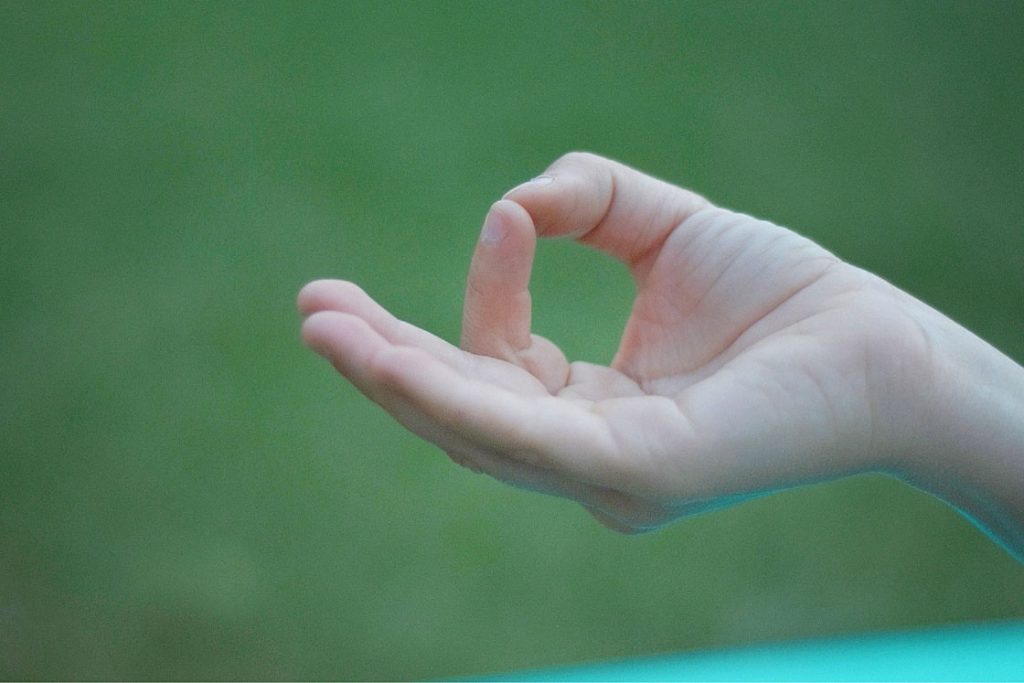
Gyan mudra is one of the most well-known mudras which is often practiced during meditation. Lord Buddha and most Hindu Gods are depicted with this mudra. It is also called the Mudra of Knowledge as Gyan means wisdom or knowledge in Sanskrit.
This mudra helps with focus, stability, the flow of prana energy, and increases mental strength. Hence, if you need the strength to control your anger and increase the flow of healthy prana throughout your energy systems, this is the mudra for you.
To form this mudra, join the tip of the index finger and thumbs while keeping the rest of the fingers straight. Keep your hands on your knees with palms up. Combine this mudra with pranayamas and practice it for 30 minutes for maximum benefit.
You can also perform this mudra while doing standing yoga poses.
The Gyan mudra helps in stimulating the Root chakra thus keeping you grounded, stable, and feeling secure. And as per Ayurveda, it boosts the air element within the body which aids in memory and improved nervous system.
Conclusion
Yelling and screaming are instinctual reactions when you feel angry and are unable to control yourself. Anger is also a common emotion that is you feel when someone has emotionally or physically hurt you. It is an emotion, just like any other, that one must not ignore.
However, how you deal with it matters the most. Yoga and meditation teach you the way through which you can get better at anger management. We hope that after practicing the above-mentioned techniques, you will be able to control your anger and move on from it.


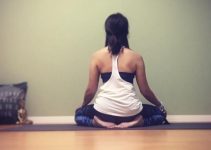

 Oct 27th to 2nd Nov
Oct 27th to 2nd Nov Learn Mudras
Learn Mudras  Deepen Your Practice
Deepen Your Practice  Find Inner Peace
Find Inner Peace